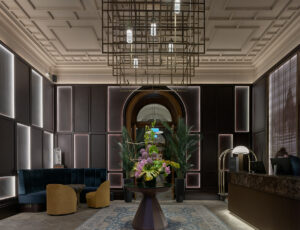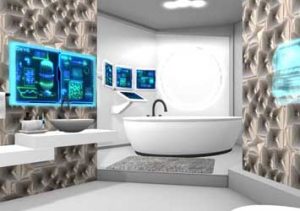GTHD
A GUIDE TO HOTEL DESIGN PT 51:
DESIGNING & COMMUNICATING IN A DIGITAL WORLD
Matthew Harvey, Director of Hidden Media, explains why now is the best time to invest in a strong website design to amplify a clear and consistent brand image…
Hotel design is the art of balancing form and function in a visual and physical sense to create a building that, despite its size, often stands out for the small details; details that represent the ethos and communicate the values of a hotel.
Like any business, a hotel needs to have a raison d’être and distinction from other hotels. These individualities are characterised in the layout, design and styling within a hotel, but how are these communicated to potential guests on the other side of the world?
Web design and digital marketing is much the same as hotel design; striking a balance between form and function to provide the service, information or function that a user is looking for, whilst communicating the values and brand message in the visual layout, design and style.
“Effective storytelling compels a reader to embark upon teasing and choreographed tour.” – Matthew Harvey, Director, Hidden Media.
Whilst many will simply reach for a hero shot – that one killer – captivating and all-encompassing picture that sits at the top of a website page or on a piece of marketing collateral, that does little to tell a story or take a potential guest on a journey.
Effective storytelling compels a reader to embark upon teasing and choreographed tour, that beguiles and enchants, providing an immersive experience through the use of words, pictures and video. It’s not just about the ‘big picture’, hints and glimpses often have more to say.
Scrolling on a smartphone is natural and easy. Your storyboard is much longer than wide. A good digital journey matches form with function, so touch points, easy booking, contact requests and promotions flow with the journey a customer takes.
The balance between form and function
Pre-pandemic we were already looking at online sources accounting for in excess of 80 per cent of bookings, this is naturally now going to be higher with an even greater shift online. Dependent on sector and location you can expect that at least 70 per cent of all digital touchpoints being made on a mobile device. Your website can be your best, or your worst salesperson.
Your customer journey can be broken down into three crucial stages:
- Awareness – Mostly achieved through content marketing, advertising, promotion, placement or ‘advocacy’ (we’ll discuss this in another feature).
- Consideration – This is when your website really steps into play, making it easy for people to find the information they need for their research, communicating your key messages, keeping them engaged, helping them reach out to you and compelling them to the next stage…
- Decision – Help to convert your customers with well-placed and well-timed promotions, supported with peer reassurance/reviews, and by reducing friction points, such as employing a simple booking/reservation system.
The consideration stage can take hours or days. Some statistics would indicate that 90 per cent of your website visitors are not yet ready to make their ‘decision’ and will visit at least three more websites before they finally decide to make a booking/reservation. Which is all the more reason why your website needs to offer a user experience that’s as memorable as a stay at your hotel.
“The hotel industry lays claim to many large, multinational brands with some of the worst websites.” – Matthew Harvey, Director, Hidden Media.
Understanding that there is a balance between form and function is about telling the story, showing style, enthusing service levels and shouting about what makes your hotel different and stand out whilst thinking about the end user, the guest, researcher and paying customer. They need to be able to quickly, easily and confidently book.
Without naming and shaming, the hotel industry lays claim to many large, multinational brands with some of the worst websites that completely fail to reflect their values, the style and design of their hotels or their slick service.
The art of storytelling
What is it that compels someone to stay at your hotel? How do they feel about your brand and what does it stand for? What makes your hotel special or different?

Image credit: Andy Art T/Unsplash
Asking yourself these questions is a really simple starting strategy. And although some of the answers could be very literal, such as, “an ocean side location with minimalist architecture, an individual private pool and fine seafood dining,” the art of storytelling is triggering the emotive connections and communicating your message, often in a subliminal way.
A movie trailer is careful not to become a spoiler, instead it’s a teaser that makes you want to buy the film. Storytelling doesn’t give everything away in the first paragraph, it instead creates a journey for your potential guest to explore your website and experience everything that your hotel, rooms, restaurant, facilities and location has to offer.
Much like interior design has to flow, each ‘chapter’ of the story leads naturally into the next, giving your guest everything they need during the consideration stage and over the line to the decision stage.
Main image credit: Brooke Lark/Unsplash






